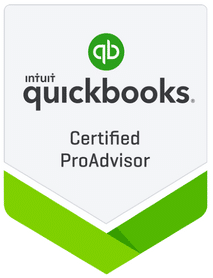- Patrick Roney
- (877) 503-8607
Follow Us :
Follow Us :
Proledge
May 17, 2010

It’s the beginning of the month. Time for your bookkeeper to tackle the reconciliation of you bank accounts and credit card accounts. Should you give her the traditional envelope stuffed with receipts? Not necessarily. It’s tempting because it sounds like your bookkeeper will need these receipts eventually, but in most cases, this will create extra cost. There is an alternative to this approach.
The logic for giving these receipts to your bookkeeper is that, in the process of bank accounts and credit card account reconciliation, she will stumble on transactions that have not yet been entered in QuickBooks and she will have to enter them and categorize them. In some instances, she won’t recognize the vendor or the vendor will be so generic (e.g. Walmart, Amazon) that she won’t be able to determine to which account a given expenses needs to be mapped. That’s when having the receipts might give her the missing information.
Unfortunately, this is very expensive, because it will take time for your bookkeeper to sort through the receipts and, most likely, you are paying her by the hour. Even if you are paying her on a flat fee basis, your bookkeeper will have included the time to manage the receipts when she negotiated her flat fee with you.
Also keep in mind that handing over the receipts to your bookkeeper has other hidden costs for you: organizing, mailing, scanning, delivering, etc…
Accordingly, for most of our clients, we ask them not to give us receipts. Here’s how we do it. In the QuickBooks chart of account, we add a “TBD Expense” or “To Be Determined Expense” category. Each time that our bookkeeper sees an expense that she doesn’t recognize, she maps it to this “TBD Expense” category. Once the reconciliation is done, we export the “TBD Expense” transactions into a spreadsheet and send it to the client. The client reviews the spreadsheet and for each expense adds a note on what the expense was. The client then sends us the spreadsheet back and we re-categorize the expenses accordingly. The longer we have been working with a client, the better we understand their business and who their vendors are and the fewer transactions get into this “TBD Expense” bucket. We have found that this saves significant cost to the clients. If the client is very hands-on, we even skip the step of sending spreadsheets back and forth. The client goes into QuickBooks, and recategorizes the TBD Expenses himself.
An alternative to this technique is for you to hand-write on the bank or credit card statements what each transaction is and only then, send the statements to your bookkeeper. This option is quite inefficient though, for at least 2 reasons:
This being said, there are circumstances, when you can’t avoid sending the receipts to your bookkeeper. Here are a couple examples:
However, unless you really have too, try to establish a process by which your bookkeeper won’t need your receipts. It will save you quite a bit of time and money.


Fill out the form below to sign up to our Blog Newsletter and we’ll drop you a line when new articles come up.
Bookkeepers.
Professional. Affordable.
ProLedge is a bookkeeping services firm.
Copyright © 2024 All rights reserved.